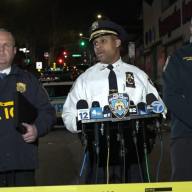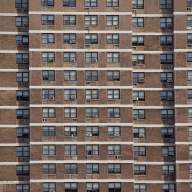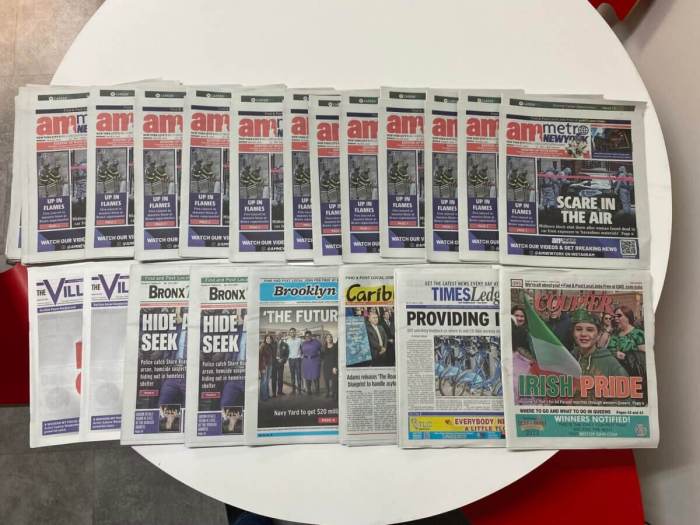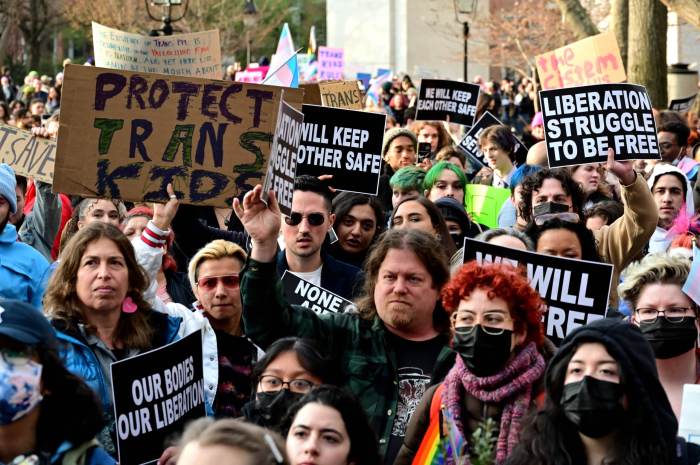A little known but very important event will take place at the Bronx County Courthouse next week. Some would say it’s a fight against helping those in need. Others would describe it as a difficult solution to a difficult problem. But those who take the time to look beneath the veil of rhetoric will see it for what it truly is: a challenge to the city’s growing policy of mandates and totalitarian control over a community board system that is losing its way as the voice of the people.
Those of us who volunteered our time and donated our money on Thursday to help feed those in need, saw firsthand that the lines are longer and the faces are younger than in years past. This recession, which claimed its initial victims on Wall Street, now seems to be trickling down to the regular folks on Main Street who were barely scraping by when it hit.
The Coalition For The Homeless reported just last month that more than 39,000 people are seeking shelter in New York’s system. That’s a 45% increase in the eight years since Michael Bloomberg took office. Sixty percent of that increase is homeless families, and of the total homeless population, 16,000 are children. It’s an alarming trend, especially in the Bronx which has been called upon by the Department of Homeless Services (DHS) to house more than one-third of the city’s homeless population. What’s even more alarming is how the city plans to meet this demand.
Pursuant to the City Charter, the Commissioner of Homeless Services…”in consultation with other appropriate government agencies, (shall) plan housing for homeless families and individuals.” This has always been perceived to mean that the City Planning Commission and the local community boards would play a part in such planning to assure that no single community would be set upon to shoulder more than its fair share. In years past, a “fair share hearing” was conducted and the community was given a chance to be heard prior to the development of new homeless shelter facilities. Under the current administration, however, community notification has all but ceased.
This is due largely to a loop hole in the law that allows DHS to bypass the City Charter’s requirements if it doesn’t spend capital money or enter into a fixed term lease with a landlord who wants to make his property available for use as a shelter. The courts have allowed this exception in unique circumstances, and armed with these cases, the city has expanded the exception to become the new norm for shelter placement throughout the Bronx and other parts of the city. Each week, DHS runs an ad in the city Record soliciting proposals from landlords who will rent apartments to the city to house homeless families. In return, the city pays a “day rate” of $90 per unit and gets to bypass the charter. Homeless residents are moved in without prior community notification and the property values of private homes in the area begin to plummet.
The $3000 per month price tag is irresistible to some large property owners who find it difficult to sell condos or rent new buildings in this economy. In Community Board 10, a 38-unit “luxury” building was converted to a shelter before it ever opened to the public. In CB 7 tenants were forced out through harassment and replaced with homeless families. In CB 2, “distressed” property owners converted 7 buildings. When the community complained, DHS approved an eighth facility. Community boards in Brooklyn and Queens have experienced similar controversy. And it’s not over yet. According to Robert Hess, DHS Commissioner, “With record numbers of homeless families seeking shelter comes the need for new shelter space.”
This is surely a concern for Bronx Borough President Ruben Diaz Jr. “The Bronx is already over saturated, and forcing more (shelters) into our borough, especially without any real dialogue, is unfair” said Diaz. “The practice of limiting, or downright ignoring, community input must be stopped.” In a recent airing of News 12’s Ask The Borough President, Diaz said he expected Hess to be replaced shortly and that he would request a meeting with the borough’s elected officials, community board leaders, and DHS to address the community notification procedure and discuss the city’s plans for future shelter placement in the Bronx.
That may be a difficult conversation to have. The city likes to point to the recession as an explanation for the surge in shelter demand, and citing a “homeless emergency” seeks to justify its policy of unilateral decision making. The Coalition for the Homeless, however, also identifies failed Bloomberg administration policies as having at least an equal effect for increasing homelessness.
In their report, State of the Homeless 2009, the group cites the Bloomberg administration’s decision to cut off homeless families from Section 8 voucher assistance, and its 2-year limit on housing subsidies for those enrolled in the Work Advantage program, as just two examples. They point out that more than 14,000 formerly homeless families enrolled in the program will reach the two year time limit this fiscal year and will lose their housing subsidies. If they haven’t attained gainful employment by the time the subsidy runs out, they’re likely to fall right back into the system – a system that has no plan in place to assist recidivist homeless families.
On Monday, December 7, in Bronx County Supreme Court, the case of Westchester Square vs. Hess will be heard before the Honorable Geoffrey Wright. At issue are the practices of DHS, the right of community input, the excessive waste of taxpayer money, the devaluation of private home property values, and the over saturation of the Bronx. At stake is the future of the middle class in this borough and the ability of the homeless to escape a system that acts like more of a revolving door than a portal to a better way of life.















